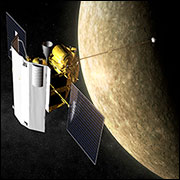
“Big screen, middle screen, little screen,” might be a fast way to describe the journey of 3D technology, the last leg of which LG unveiled Monday at the Mobile World Congress.
The world’s first three-dimensional smartphone, LG’s Optimus 3D runs the Android operating system on a 4.3-inch LCD glasses-free screen. Images don’t jump out at users, but live on the screen with depth. The Optimus can convert files into its own format, access games and display YouTube 3D. Other unusual features include dual rear cameras that can record 3D video that will require glasses to be properly viewed during playback.
Despite its many new features, whether Optimus becomes the latest “must have” handheld will depend on how much ubiquity users think artificial 3D imagery should have in their lives.
“Grainy and glorious” is how technology public relations expert Richard Laermer describes the 2D world Optimus and other larger-screen technologies are pushing into the past.
“Why, I wonder, does anyone need 3D? Are our lives that boring that images themselves can’t suffice? At this point, I am boycotting anything 3D,” he told TechNewsWorld.
However, with moving images moving ever faster into a three-dimensional future, Optimus appears “very promising” to Greenberg Glusker technology attorney Aaron Bloom. “Just about all media is moving to 3D technology, whether we like it or not.”
Interactivity and Immersion
The ability to have “a 3D experience no matter where you are” is the LG Optimus smartphone’s big promise, Bloom explained. “The primary disadvantage is that 3D means a lot more information, which will drain the battery life faster and also clog up the phone’s memory.”
The advantages of 24/7 3D are a long way from being proven, however, as is taking this once-special cinematic treat to such small, mobile screens. With movies such as “Avatar” or games on Microsoft Kinect, 3D in the large actually adds something to the viewing experience, including interactivity and immersion.
A smartphone, however, couldn’t be more different. Viewing times are seconds or minutes instead of hours, and the viewing environment always changing: indoors, outdoors, sun, shade, on the go, in the car, in bed, on the street.
Speaking of cars, smartphones have already drawn the ire of automobile safety advocates. The thought of drivers viewing potentially jittery three-dimensional images is almost certain to raise even greater concerns — and maybe even a few new state prohibitions.
Godzilla vs. Optimus
Given the concept’s brand new track record, it takes some imagination to figure out what 3D will add to the smartphone’s short-time, ever-changing situations.
“All I can imagine it being useful for is Godzilla movies in old black and white,” Laermer quipped.
However, it may prove useful in ways that have yet to be invented.
“I think 3D technology on smartphones will lead to new applications such as 3D video conferencing,” Greenberg Glusker’s Bloom told TechNewsWorld. “I also think that it may be used by experts in remote locations unable to get to a full-sized computer during a time when an important decision has to be made. For example, a medical expert might be able to look at some 3D images on his smartphone while traveling, and help his team back home save a patient’s life.”
Videoconferencing makes sense, because it’s a relatively stable platform — but even stable platforms are imperfect 3D environs. Headaches, crossed eyes, and general nausea are among the many complaints viewers level at large-screen 3D imagery.
Content to let “early adopters” — who are likely to pay more for the pleasure — sort out initial complaints, Bloom will wait and see.
“I will not rush out to buy a 3D smartphone any time soon,” he said.






















































Very nice- can’t wait for my phone to produce a halographic genie that accepts commands- yeah. But until then- big congrats guys on 3-D, can’t wait to get mine.